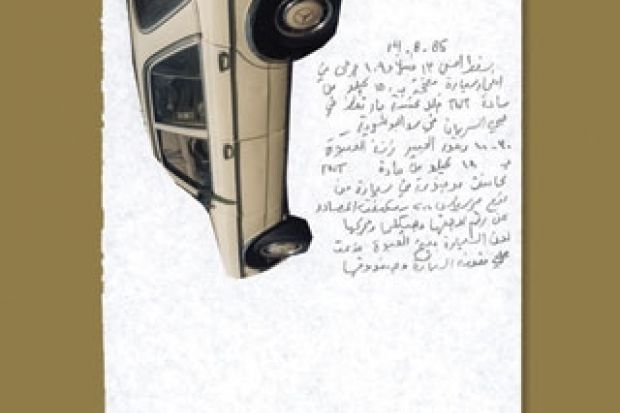A stuffed Jack Russell terrier stands on its hind legs, paws wrapped around a hand-lettered sign that reads, “I’m dead”. The dog is either a work of cutting-edge sculpture or an adolescent stunt with taxidermy. In fact, it is both: The Independent calls it a “stand-out” work by artist David Shrigley, best known for his darkly humorous cartoons drawn in a naive style. Shrigley is one of this year’s four finalists for the Turner Prize, the UK’s most prestigious award for contemporary art.
“Contemporary art is badly known,” Peter Osborne declares in the introduction to his ambitious philosophical treatise on the subject. It is hard to disagree with this diagnosis. Despite the increasing mainstream popularity of contemporary art – Tate Modern had a record-breaking 5.3 million visitors in 2012 – today’s art world is in some ways more impenetrable than ever. It seems governed by hidden prin-ciples, inscrutable signs and, most importantly, wealthy collectors. To the uninitiated, the pronouncements issued by the curators and critics who serve as its high priests can seem arbitrary or just nonsensical. The dense, jargon-laden discussions that fill exhibition essays often serve to alienate rather than to illuminate. A cynic may find a bleaker meta-message in Shrigley’s irreverent sculpture: contemporary art is a dead dog that can do nothing more than state the obvious about itself, over and over again.
The unfortunate irony in the book’s approach and methodology is that it aims to explain contemporary art, or at least make it less ‘badly known’, and yet the book is written in a language and frame of reference even more forbidding than that of its subject: continental philosophy
Osborne is clearly more optimistic than that. As professor of modern European philosophy at Kingston University, he aims to make sense of contemporary art by arguing that it is “postconceptual”. By this he means that art today expresses our unique historical situation. The past 25 years are marked by a geopolitical shift from the international to the “transnational”, characterised by the erosion of boundaries among nation states through demographic shifts, the movements of global capital, labour migrations and, of course, the internet.
Art that is truly contemporary in Osborne’s sense expresses this newfound form of porosity and contingency. Just as our current political situation is distinctively transnational, today’s art is transcategorical: it actively resists traditional concepts governing artistic medium, authorship and meaning. Of course, not everything produced after 1989 and shown in today’s art galleries, fairs and museums counts as “contemporary” in his specific sense of the term. The definition is exclusive rather than inclusive: it aims to evaluate, not simply to describe. Works by fictional collectives such as The Atlas Group (note the allusion to globalisation in the name) exemplify the kind of challenging, inherently transgressive art that Osborne champions. Or, as he puts it, in order to be “contemporary”, art must “relate directly to the socio-spatial ontology of its own international and transnational sites and relations”.
This convoluted sentence brings us to the unfortunate irony surrounding the book’s approach and methodology: it aims to explain contemporary art, or at least make it less “badly known”, and yet the book is written in a language and frame of reference even more forbidding than that of its subject: continental philosophy. The author assumes a comfortable facility with the major works of Hegel, Marx, Adorno, Heidegger and Foucault as he deploys the lingua franca of his field to unspool his argument. The analysis is most compelling in the moments when Osborne descends from the theoretical stratosphere to consider actual artists and artworks, such as his case study of 1960s artist Robert Smithson, of Spiral Jetty fame.
However, by writing a book that speaks only to the members of his own insular tribe, Osborne undercuts the case he wants to make for the continued relevance of both art and philosophy to our present age. Even dead dogs deserve their day, but Osborne does not provide it.
Anywhere or Not at All: Philosophy of Contemporary Art
By Peter Osborne
Verso, 288pp, £60.00 and £19.95
ISBN 9781781681138, 80940 and 83354 (e-book)
Published 20 May 2013
Register to continue
Why register?
- Registration is free and only takes a moment
- Once registered, you can read 3 articles a month
- Sign up for our newsletter
Subscribe
Or subscribe for unlimited access to:
- Unlimited access to news, views, insights & reviews
- Digital editions
- Digital access to THE’s university and college rankings analysis
Already registered or a current subscriber?




